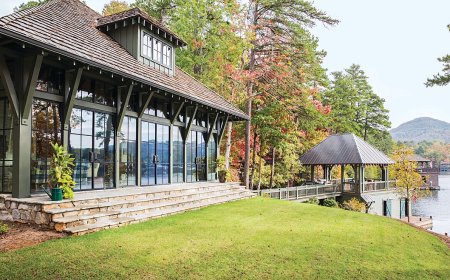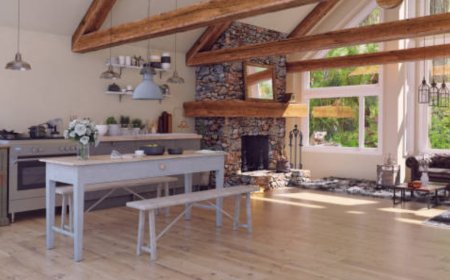How to Picnic in Verdon Gorge
How to Picnic in Verdon Gorge Verdon Gorge, often called the “Grand Canyon of Europe,” is one of France’s most breathtaking natural wonders. Carved over millions of years by the Verdon River, this 25-kilometer-long canyon features turquoise waters, towering limestone cliffs, and secluded meadows that make it an ideal destination for outdoor enthusiasts. Among the most cherished experiences here is
How to Picnic in Verdon Gorge
Verdon Gorge, often called the “Grand Canyon of Europe,” is one of France’s most breathtaking natural wonders. Carved over millions of years by the Verdon River, this 25-kilometer-long canyon features turquoise waters, towering limestone cliffs, and secluded meadows that make it an ideal destination for outdoor enthusiasts. Among the most cherished experiences here is picnicking — a simple, profound way to connect with nature while savoring the region’s culinary heritage. Unlike urban picnics in manicured parks, picnicking in Verdon Gorge demands preparation, respect for the environment, and an understanding of its unique terrain. Whether you’re a solo traveler seeking solitude, a couple looking for romance amid nature, or a family wanting to create lasting memories, mastering the art of picnicking here transforms a day trip into an unforgettable journey.
The importance of learning how to picnic properly in Verdon Gorge extends beyond comfort. This region is a protected natural park, home to rare flora and fauna, fragile ecosystems, and ancient geological formations. A careless picnic can leave behind litter, disturb wildlife, or erode sensitive trails. Conversely, a thoughtful, well-planned picnic supports sustainable tourism, preserves the landscape for future generations, and enhances your own experience through mindfulness and immersion. This guide provides a comprehensive, step-by-step approach to picnicking in Verdon Gorge — blending practical logistics with environmental ethics and local culture. By the end, you’ll know exactly how to choose the perfect spot, pack efficiently, navigate trails safely, and leave no trace — all while enjoying the stunning beauty of one of Europe’s most dramatic landscapes.
Step-by-Step Guide
1. Choose Your Picnic Location Wisely
Verdon Gorge offers dozens of potential picnic spots, but not all are equal. The most popular and accessible locations include:
- La Palud sur Verdon — The main gateway to the gorge, offering easy parking and several shaded picnic areas near the riverbank. Ideal for families and first-time visitors.
- Point Sublime — A panoramic viewpoint accessible via a moderate 20-minute hike from the road. Offers sweeping views of the canyon and is perfect for sunset picnics.
- Les Pradells — A grassy, shaded area near the river, less crowded than La Palud. Accessible by car and perfect for those seeking quiet.
- Castellane to Moustiers-Sainte-Marie Trail (GR 4) — For the adventurous, select a flat, elevated spot along this long-distance trail. Requires proper hiking gear and preparation.
When selecting your spot, consider accessibility, shade, proximity to water, and wind exposure. Avoid areas marked “Interdit” (Forbidden) or near nesting zones for birds of prey. Always check local signage and park maps before settling. Use the official Parc Naturel Régional du Verdon website or app to view real-time crowd levels and trail conditions.
2. Plan Your Visit Around the Seasons
Verdon Gorge’s climate varies dramatically by season, directly impacting your picnic experience.
Spring (April–June) is ideal for picnicking. Temperatures range from 15°C to 25°C, wildflowers bloom along the trails, and the river is at its most vibrant due to snowmelt. Crowds are manageable, especially in early April. Pack a light jacket — evenings can be cool.
Summer (July–August) brings peak tourism and temperatures over 30°C. Picnicking here requires extra caution: sun protection is non-negotiable. Choose shaded areas, bring ample water, and avoid midday heat. Many local vendors offer chilled local specialties — consider buying pre-packaged charcuterie and cheese to avoid carrying heavy items.
Autumn (September–October) offers crisp air, golden foliage, and fewer visitors. The river’s color deepens to emerald, and the light is perfect for photography. Pack layers — temperatures drop quickly after sunset.
Winter (November–March) is not recommended for picnicking unless you’re experienced. Trails may be icy, most services are closed, and daylight hours are short. If you do venture out, treat it as a winter hike with a thermos of hot tea rather than a traditional picnic.
3. Pack the Right Gear
Forget the plastic tablecloth and disposable plates. Picnicking in Verdon Gorge calls for thoughtful, eco-conscious packing.
Essentials:
- Insulated cooler bag — Keeps food fresh and drinks cold. Use reusable ice packs instead of single-use ice.
- Collapsible silicone containers — Lightweight, stackable, and easy to clean. Avoid glass.
- Reusable cutlery, napkins, and cloth tablecloth — Opt for bamboo or stainless steel. A small, washable cotton tablecloth adds comfort without waste.
- Large reusable water bottles — Minimum 2 liters per person. Tap water in the region is safe, but bottled is common. Refill at designated stations.
- Lightweight folding chair or sit mat — Many spots are rocky or uneven. A compact, quick-dry mat is ideal.
- Small trash bag — Carry out everything you bring in. Even biodegradable items like fruit peels can attract wildlife and disrupt ecosystems.
- First-aid kit — Include antiseptic wipes, blister pads, insect repellent, and sunscreen (mineral-based, reef-safe).
- Portable phone charger — Signal is weak in many canyon areas. Keep your device powered for emergencies and navigation.
Pro Tip: Pack your food in a single, compact bag — not multiple containers. This reduces clutter and makes cleanup faster and more efficient.
4. Select Local, Seasonal Foods
One of the greatest joys of picnicking in Verdon Gorge is enjoying the region’s culinary traditions. Avoid pre-packaged snacks from supermarkets. Instead, source authentic, local products:
- Charcuterie — Try saucisson de l’Aubrac, duck pâté, or cured pork from local producers in Castellane or Moustiers-Sainte-Marie.
- Cheese — Look for Banon (a goat cheese wrapped in chestnut leaves), Tomme de Savoie, or fresh fromage blanc.
- Bread — Buy a rustic baguette or a round loaf from a boulangerie. Avoid sliced bread — it dries out quickly.
- Fruit — Seasonal choices include figs, peaches, cherries, and wild strawberries in late spring.
- Wine or local beverages — A bottle of Côtes de Provence rosé or a craft cider from the Alpes-de-Haute-Provence adds sophistication. Bring a small wine opener and reusable cups.
- Snacks — Homemade tapenade, olives, or dried apricots from the region.
Visit the weekly markets in La Palud, Castellane, or Moustiers-Sainte-Marie the day before your picnic. Ask vendors for recommendations — many will pack your items in reusable paper or cloth.
5. Access Your Picnic Spot Safely
Many of the best picnic locations require a short hike. Always prepare for the terrain.
For beginners: Stick to paved or well-maintained paths like the route from La Palud to the river’s edge. Wear sturdy, closed-toe shoes — even if the trail looks flat, loose gravel and hidden roots are common.
For experienced hikers: The Sentier Martel (Martel Trail) is a famous 11-kilometer path along the canyon’s edge. You can access a picnic-friendly overlook after 3 kilometers, but this route is steep and exposed. Only attempt it in good weather with proper gear.
Always inform someone of your plans and estimated return time. Download offline maps using apps like Komoot or Gaia GPS — cell service is unreliable. Carry a whistle and a small flashlight, even for day trips.
6. Set Up Your Picnic with Minimal Impact
Once you arrive, set up your picnic with environmental care as your priority.
- Choose a spot at least 20 meters from the riverbank to avoid contaminating water sources.
- Do not sit on moss-covered rocks or fragile vegetation — use your mat.
- Keep food sealed until ready to eat to avoid attracting birds or insects.
- Use a small bowl for water if rinsing utensils — never pour soapy water directly onto the ground.
- Keep noise low. This is a sanctuary for wildlife, including golden eagles and wild boars.
Take your time. A picnic here isn’t about speed — it’s about presence. Sit quietly for five minutes before eating. Listen to the wind, the river, the birds. Let the landscape settle around you.
7. Clean Up Thoroughly and Leave No Trace
This is the most critical step — and the one most often overlooked.
Before you leave:
- Collect every crumb, wrapper, and napkin — even if it looks like it’s “natural.”
- Check under rocks and behind trees — food scraps can be hidden.
- Wipe down your mat and containers with a damp cloth if you have water.
- Place all waste in your trash bag and carry it out. There are no bins along most trails.
- If you brought a reusable water bottle, refill it at a designated station on your way out — don’t leave it half-full.
Leave the site better than you found it. If you see litter left by others, pick up one or two pieces. You’re not responsible for everyone — but you are responsible for your impact.
8. Respect Wildlife and Local Regulations
Verdon Gorge is home to over 1,500 plant species and protected animals, including the Eurasian lynx, the bearded vulture, and the Alpine newt.
- Never feed animals — even birds. Human food disrupts their natural diet and behavior.
- Keep dogs on a leash at all times. Many trails are in protected zones where pets are restricted.
- Do not pick wildflowers or collect stones. All flora and fauna are protected under French law.
- Stay on marked trails. Venturing off-path damages root systems and accelerates erosion.
- Observe quiet hours: no loud music, amplified devices, or shouting after 8 PM or before 7 AM.
Violating these rules can result in fines up to €1,500. More importantly, it undermines the ecological balance that makes Verdon Gorge so special.
Best Practices
Picnicking in Verdon Gorge is more than a meal outdoors — it’s a ritual of mindfulness, sustainability, and reverence for nature. The following best practices ensure your experience is not only enjoyable but also responsible and enduring.
Arrive Early or Stay Late
The golden hours — just after sunrise and before sunset — offer the most magical light and the fewest people. Arriving at 7 AM gives you the trail to yourself. Staying until dusk lets you witness the canyon’s colors shift from emerald to violet. Pack a thermos of coffee or herbal tea to enjoy as the sun dips behind the cliffs.
Travel Light, Pack Smart
Every extra item adds weight and clutter. Stick to the essentials. A 10-liter backpack is sufficient for two people. Use compression sacks to maximize space. Avoid bulky coolers — insulated bags with reusable ice packs are lighter and more flexible.
Engage with Local Culture
Learn a few basic French phrases: “Merci” (thank you), “Où est la poubelle?” (Where is the trash can?), “C’est magnifique” (It’s beautiful). Locals appreciate the effort. Ask about regional specialties — many producers welcome visitors to their farms.
Photograph Responsibly
While capturing the beauty of Verdon Gorge is tempting, avoid climbing on cliffs, standing in the river, or disturbing others for the perfect shot. Use a tripod only on designated platforms. Respect privacy — don’t photograph other picnickers without permission.
Practice Silent Enjoyment
Put your phone away. Let the sound of the river, the rustle of leaves, and the distant cry of a raptor be your soundtrack. Research shows that nature immersion reduces stress and improves cognitive function. A silent picnic is often the most restorative.
Bring a Journal or Sketchbook
Many visitors find that writing or drawing during their picnic deepens their connection to the place. Note the scent of wild thyme, the pattern of light on water, or the texture of limestone. These moments become treasured memories.
Share the Experience, Not the Space
If you encounter another group, greet them politely. Avoid encroaching on their space. If the best view is crowded, find your own. There are countless hidden corners in Verdon Gorge — patience rewards you with solitude.
Plan for the Unexpected
Weather can change rapidly. Always carry a lightweight rain jacket, even on sunny days. Sudden thunderstorms are common in summer. If the sky darkens, pack up quickly and move to a safe, open area — avoid cliffs and riverbanks during storms.
Teach Others
If you’re with children or friends who are new to nature picnicking, take a moment to explain why leaving no trace matters. Let them help pack the trash bag or choose the spot. These habits form lifelong values.
Tools and Resources
Success in picnicking at Verdon Gorge depends on the right tools and trusted resources. Here’s a curated list to support your planning and execution.
Navigation and Maps
- Parc Naturel Régional du Verdon App — Official app with real-time trail conditions, weather alerts, and interactive maps. Available on iOS and Android.
- Komoot — Offers detailed hiking routes with elevation profiles. Download offline maps for areas without signal.
- Google Earth (Offline Mode) — Use satellite view to scout picnic spots before you leave home.
Food and Beverage Sources
- Marché de La Palud — Every Saturday morning, featuring local cheeses, charcuterie, honey, and wine. Open 7 AM–1 PM.
- Boulangerie Le Moulin (Castellane) — Famous for its sourdough baguettes and walnut bread.
- La Ferme du Verdon — Organic farm near Moustiers-Sainte-Marie offering pre-packed picnic baskets with regional products.
- Les Vignerons du Verdon — Cooperative winery offering tastings and bottles for takeaway. Ask for a rosé labeled “Cuvée Gorge.”
Equipment Recommendations
- Thermos — Hydro Flask or Zojirushi for keeping drinks hot or cold for 12+ hours.
- Collapsible Silicone Bowl Set — Tovolo or Sea to Summit — lightweight and dishwasher-safe.
- Reusable Beeswax Wraps — For wrapping cheese or bread — better than plastic wrap.
- Compact Bamboo Cutlery Set — Includes fork, knife, spoon, and chopsticks — often comes with a cloth pouch.
- Microfiber Towel — Dries quickly, packs small, and can double as a seat pad.
Guides and Books
- “The Verdon Gorge: A Hiker’s Guide” by Marie-Claire Dubois — Detailed trail descriptions and hidden picnic spots.
- “Provence: The Art of the Picnic” by Jean-Luc Martin — Recipes and cultural context for regional picnic traditions.
- “Leave No Trace: A Practical Guide for Outdoor Enthusiasts” — Essential reading for ethical outdoor behavior.
Weather and Safety Alerts
- Météo-France — Official French weather service. Check the Alpes-de-Haute-Provence forecast daily.
- Alertes Météo — SMS alerts for storms, heatwaves, or fire risks in the region.
- SPF (Sécurité Civile) — Emergency number: 112. Save it in your phone.
Community and Volunteer Resources
- Association des Amis du Verdon — Local conservation group that organizes clean-up days. Join a volunteer picnic — you’ll meet locals and learn more about the ecosystem.
- Verdon Gorge Instagram Community — Search
VerdonGorgePicnic for real-time photos and tips from fellow travelers.
Real Examples
Real-world experiences illustrate how the principles outlined above translate into unforgettable moments. Here are three detailed case studies from picnickers who visited Verdon Gorge with intention and care.
Case Study 1: The Solo Traveler — Sophie, 34, Lyon
Sophie, a graphic designer, took a week off to reconnect with nature after burnout. She chose Point Sublime for her picnic, arriving at 6:30 AM. She packed a small insulated bag with a baguette from a local bakery, Banon cheese wrapped in chestnut leaves, dried figs, and a thermos of lavender-infused tea. She carried a sketchbook and a single reusable water bottle.
She sat quietly for 45 minutes before eating, sketching the way the light hit the canyon walls. She ate slowly, savoring each bite. When finished, she meticulously collected every trace of her meal, even wiping her mat with a damp cloth. She left a small note in her journal: “This is where I remembered how to breathe.”
Her experience: “I didn’t take a single photo. I didn’t need to. The memory is in my hands — the roughness of the stone, the scent of wild rosemary, the silence.”
Case Study 2: The Family — The Lefevres, 4 Adults, 2 Children
The Lefevres, from Marseille, planned a weekend trip to Verdon Gorge with their 8- and 11-year-old children. They chose Les Pradells, a grassy area near the river, accessible by a 10-minute walk. They packed reusable containers with homemade tapenade, hard-boiled eggs, cherry tomatoes, and chilled rosé in a thermos. Each child carried their own small backpack with a water bottle and a snack.
Before eating, they played a game: “Find Three Natural Things That Don’t Belong.” The children found a plastic wrapper, a bottle cap, and a torn piece of foil — all left by others. They collected them and placed them in the family’s trash bag. After lunch, they drew pictures of the canyon and left them under a rock as a “gift to the gorge.”
“The kids didn’t want to leave,” said their mother. “They asked if they could come back next year. That’s the power of a good picnic — it doesn’t just feed the body, it feeds the soul.”
Case Study 3: The Couple — Antoine and Léa, 40s, Paris
Antoine and Léa celebrated their 15th anniversary with a quiet picnic at the edge of the canyon near the Pont de l’Artuby. They brought a small blanket, two glasses, a bottle of local rosé, and a selection of artisanal chocolates from a nearby chocolatier. They didn’t bring plates — they ate the chocolates directly from the box, letting the flavors linger.
They sat in silence for an hour, watching a pair of golden eagles circle above. When the sun began to set, they lit a single beeswax candle in a small glass jar — a gift from Léa’s grandmother. They didn’t take photos. Instead, they wrote letters to each other — one to be opened next year, one to be read at their 20th anniversary.
“It wasn’t about the food,” Antoine said. “It was about being still. In a world that never stops, Verdon Gorge gave us a place to pause — and we didn’t leave a trace.”
FAQs
Can I bring my dog to picnic in Verdon Gorge?
Dogs are permitted on most trails but must be kept on a leash at all times. Some areas, particularly near nesting zones for birds of prey, prohibit pets entirely. Check signage and the official park map before bringing your dog. Always carry waste bags and clean up immediately.
Are there restrooms near picnic areas?
Basic restrooms are available at La Palud, Castellane, and Moustiers-Sainte-Marie. Most trailside picnic spots have no facilities. Plan accordingly. Carry hand sanitizer and wet wipes.
Is it safe to drink water from the Verdon River?
No. Although the river looks pristine, it may contain microorganisms or runoff from upstream. Always bring your own water or refill at designated stations. Bottled water is widely available in nearby towns.
What’s the best time of year to picnic in Verdon Gorge?
April to June and September to October offer the best balance of pleasant weather, manageable crowds, and vibrant scenery. Summer is hot and busy; winter is too cold and unpredictable for most picnickers.
Can I have a barbecue or fire at my picnic spot?
Open fires and barbecues are strictly prohibited throughout the gorge. The risk of wildfire is too high, and the terrain is too dry. Use a portable stove only in designated camping areas — not for picnicking.
Do I need a permit to picnic in Verdon Gorge?
No permit is required for day picnics. However, if you plan to camp overnight or use the river for kayaking, you must obtain authorization from the park office.
What should I do if I see someone littering?
Do not confront them directly. Instead, collect the litter if safe to do so, or report the behavior to the park rangers using the official app. Most visitors are unaware of the rules — your quiet action may inspire them.
Can I bring a drone to capture my picnic?
Drone use is prohibited in Verdon Gorge without special permission from the park authorities. The area is a protected airspace due to wildlife and safety concerns. Respect the silence — both visual and auditory.
Is picnicking allowed in the canyon below the river level?
Yes, but only if you reach it via designated trails. The riverbed itself is not a picnic area — it’s a dynamic watercourse. Never picnic on rocks that may be submerged during flash floods.
How do I know if a spot is officially designated for picnicking?
Look for wooden signs with a picnic table icon or a flat, cleared area with no vegetation. If unsure, consult the park map or ask at the visitor center. When in doubt, choose a spot at least 20 meters from the trail or river.
Conclusion
Picnicking in Verdon Gorge is not merely a meal under the sky — it is an act of reverence, a quiet rebellion against the rush of modern life, and a commitment to preserving one of Earth’s most extraordinary landscapes. The turquoise waters, the towering cliffs, the scent of wild herbs — these are not backdrops. They are participants in your experience.
By following the steps outlined in this guide — choosing your spot with care, packing with intention, eating with mindfulness, and leaving with humility — you become part of a legacy of responsible travelers who understand that beauty is not a resource to be consumed, but a gift to be honored.
The most memorable picnics here aren’t the ones with the fanciest food or the best photos. They’re the ones where time slowed, where silence spoke louder than words, and where you walked away not just full, but changed.
So pack your bag. Choose your trail. Sit quietly. And remember: you are not just visiting Verdon Gorge. You are borrowing it — for a few hours, a single day. Leave it as you found it. Better yet — leave it a little more alive.





































